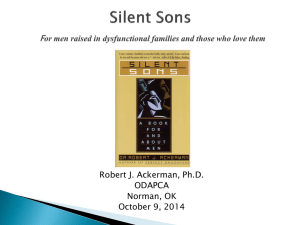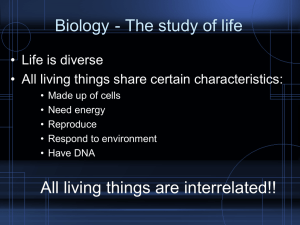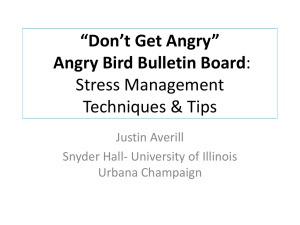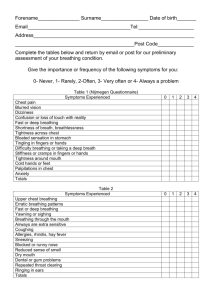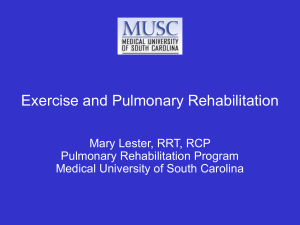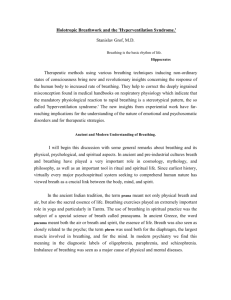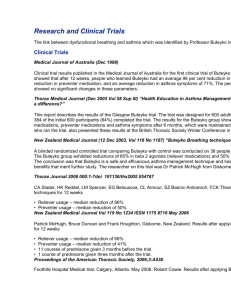литературу
advertisement
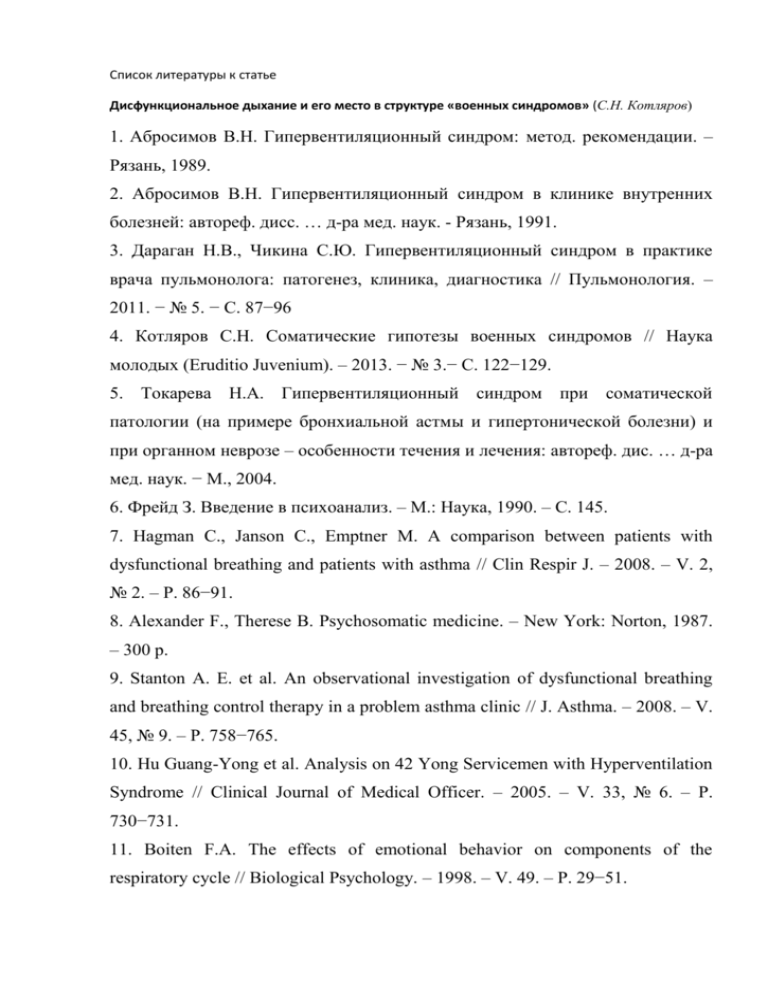
Список литературы к статье Дисфункциональное дыхание и его место в структуре «военных синдромов» (С.Н. Котляров) 1. Абросимов В.Н. Гипервентиляционный синдром: метод. рекомендации. – Рязань, 1989. 2. Абросимов В.Н. Гипервентиляционный синдром в клинике внутренних болезней: автореф. дисс. … д-ра мед. наук. - Рязань, 1991. 3. Дараган Н.В., Чикина С.Ю. Гипервентиляционный синдром в практике врача пульмонолога: патогенез, клиника, диагностика // Пульмонология. – 2011. − № 5. − С. 87−96 4. Котляров С.Н. Соматические гипотезы военных синдромов // Наука молодых (Eruditio Juvenium). – 2013. − № 3.− С. 122−129. 5. Токарева Н.А. Гипервентиляционный синдром при соматической патологии (на примере бронхиальной астмы и гипертонической болезни) и при органном неврозе – особенности течения и лечения: автореф. дис. … д-ра мед. наук. − М., 2004. 6. Фрейд З. Введение в психоанализ. – М.: Наука, 1990. – С. 145. 7. Hagman C., Janson C., Emptner M. A comparison between patients with dysfunctional breathing and patients with asthma // Clin Respir J. – 2008. – V. 2, № 2. – P. 86−91. 8. Alexander F., Therese B. Psychosomatic medicine. – New York: Norton, 1987. – 300 p. 9. Stanton A. E. et al. An observational investigation of dysfunctional breathing and breathing control therapy in a problem asthma clinic // J. Asthma. – 2008. – V. 45, № 9. – P. 758−765. 10. Hu Guang-Yong et al. Analysis on 42 Yong Servicemen with Hyperventilation Syndrome // Clinical Journal of Medical Officer. – 2005. – V. 33, № 6. – P. 730−731. 11. Boiten F.A. The effects of emotional behavior on components of the respiratory cycle // Biological Psychology. – 1998. – V. 49. – P. 29−51. 12. Loveridge B. et al. Breathing pattern in patients with chronic obstructive pulmonary disease //American Review of Respiratory Disease. – 1984. – V. 130. − P. 730−733. 13. Thomas M. et al. Breathing retraining for dysfunctional breathing in asthma; a randomised controlled trial // Thorax. – 2003. – V. 58. – P. 110−115. 14. Lewis T. et al. Breathlessness in soldiers suffering from irritable heart // Br Med J. – 1916. – P. 517−519. 15. Campbell E.J., Howell J.B. The sensation of breathlessness // British Medical Bulletin. – 1963. – V. 19, № 1. – P. 36−40. 16. Comroe J H. Physiology of Respiration. − Chicago, 1974. – Р. 316. 17. Courtney Rosalba D.O. Dysfunctional breathing: its parameters, measurement and relevance: a thesis submitted in fulfilment of the requirements for the degree of Doctor of Philosophy. − RMIT University, 2011. − 300 p. 18. Da Costa J.M. On irritable heart: a clinical study of a form of functional cardiac disorder and its consequences // Am. J. M. Sc. – 1871. – P. 61−117. 19. Mahler D., Harver A., Lentine T. Descriptors of breathlessness in cardiorespiratory diseases //Am J Respir Crit Care Med. – 1996. – V. 154. – P. 1357−1363. 20. Harver A. et al. Descriptors of breathlessness in healthy individuals: Distinct and separate constructs // Chest. – 2000. – V. 118. – P. 679−690. 21. Simon P. et al. Distinguishable sensations of breathlessness induced in normal volunteers // Am Rev Respiratory Diseases. – 1989. – V. 140. – P. 1021−1027. 22. Dixhoorn J. A method for assessment of one dimension of dysfunctional breathing: distribution of breathing movement // Biological Psychology. – 2004. – V. 67. – P. 415−416. 23. Dixhoorn J., Duivenvoorden H. Efficacy of Nijmegen questionnaire in recognition of the hyperventilation syndrome // Journal of Psychosomatic Research. – 1985. –V. 29, № 2. – P. 199−205. 24. Dixhoorn J. Hyperventilation and Dysfunctional Breathing // Biol. Psychol. −1997. – V. 46. – P. 90−91. 25. Hornsveld H. et al. Double-bind placebo-controlled study of the hyperventilation provocation test and the validity of the hyperventilation syndrome // The lancet.− 1996. − V. 348. – P. 154−158. 26. Lougheed D., Fisher T., O’Donnell Dynamic hyperinflation during bronchoconstriction in asthma: implications for symptom perception // Chest. – 2006. – V. 130. – P. 1072−1081. 27. De Peuter S. et al. Dyspnea: the role of psychological processes // Clinical Pyschology Review. – 2004. – V. 24. – P. 557−581. 28. Baldwin D.N. et al. Effects of sighs on breathing memory and dynamics in healthy infants // J. Appl. Physiol. – 2004. – V. 97, № 5. – P. 1830−1839. 29. Folgering H. The pathophysiology of hyperventilation syndrome // Monaldi Arch Chest Dis. – 1999. – V. 54, № 4. – P. 365−372. 30. Free Breathing Test: How good is your breathing: M. White − 2005 // URL: http://http://www.breathing.com/tests.htm. 31. Hartshorne H. On heart disease in the army // Am. J. M. Sc. – 1864. – P. 48−89. 32. Hornsveld H.K., Garsson B. Hyperventilation Syndrome // The Netherlands Journal of Medicine. – 1996. – V. 50. – P. 13−20. 33. Hornsveld H.K., Garsson B. Hyperventilation syndrome: an elegant but scientifically untenable concept // Neth. J. Med. – 1997. – V. 50. – P. 13−20. 34. Hornsveld H., Garssen B. The low specificity of the Hyperventilation Test // Journal of Psychosomatic Research. – 1996. – V. 41, № 5. – P. 435−449. 35. Lewis B. I. The Hyperventilation Syndrome // Annals of Internal Medicine. – 1953. – V. 38. – P. 918−927. 36. Lum L.C. Hyperventilation: The tip and the iceberg // Journal of Psychomatic Research. – 1975. – V. 19. – P. 375−383. 37. Mackenzie J. The soldier's heart // Br. Med. J. – 1916. – P. 117−119. 38. Mackenzie J. The soldier's heart and war neurosis // Br. Med. J. – 1920. – P. 530−534. 39. Manning H., Schwartzstein R. Pathophysiology of dyspnea // New England Journal of Medicine– 1995. − V. 333. – P. 1547−1553. 40. McLaughlin L. Breathing evaluation and retraining in manual therapy // Journal of Bodywork and Movement Therapies. − 2009. – № 13. – P. 276−282. 41. Morgan M. Dysfunctional Breathing Asthma: Is it common, identifiable and correctable // Thorax. – 2002. – V. 57 (Suppl II). – P.31−35. 42. O'Donnell D. et al. Pathophysiology of dyspnea in chronic obstructive pulmonary disease //Proc. Am. Thorac. Society. – 2007. – № 4. – P. 145−168. 43. Thomas A.M. et al. Prevalence of dysfunctional breathing in patients treated for asthma in primary care: cross sectional survey // BMJ. – 2001. – V. 322. – P. 1098−1100. 44. Prys-Picard C., Niven R.M. Dysfunctional breathing in patients with asthma // Thorax. – 2008. – V. 63, № 6. – P. 568. 45. Kelsall H. L. et al. Respiratory health status of Australian veterans of the 1991 Gulf War and the effects of exposure to oil fire smoke and dust storms // Thorax. – 2004. – V. 59. – P. 897–903. 46. Sody A.N. et al. Sigh syndrome: is it a sign of trouble // J Fam Pract. – 2008. – V. 57, № 1. – P. 1−5. 47. Elliot M.W. et al. The language of breathlessness: use of verbal descriptors by patients with cardiorespiratory disease // Am Rev Respiratory Diseases. – 1991. – V.144. – P. 826−832. 48. Thomas M. et al.The presence of dysfunctional breathing in adults with and without asthma //Prim Care Respir J. 2005. – V. 14, № 2. – P. 78−82. 49. Scano G., Stendardi L., Grazzini M. Understanding dyspnea by its language // Eur Respir J. – 2005. – V. 25. – P. 380−385. 50. VHA/DoD Clinical Practice Guideline for the Management of Medically Unexplained Symptoms: Chronic Pain and Fatigue/Working Group. – Washington, 2001. 51. Warburton C., Jack S. Can you diagnose hyperventilation // Chronic Respiratory Diseases. – 2006. − № 3. – P. 113−115. 52. Wientjes C. Respiration in psychophysiology: methods and applications // Biological Psychology. – 1992. – V. 34. – P. 179−203. 53. William N., Gardner M.B. The pathophysiology of hyperventilation disorders // Chest. – 1996. – V. 109. – P. 516–534.

